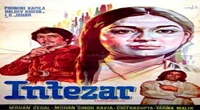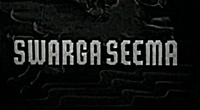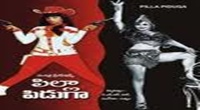



The areca nut (/?ær?k?/ or /??ri?k?/) is the fruit of the areca palm (Areca catechu), which grows in much of the tropical Pacific (Melanesia and Micronesia), Southeast and South Asia, and parts of east Africa. It is commonly referred to as betel nut so it is easily confused with betel (Piper betle) leaves that are often used to wrap it (paan). The term areca originated from the Kannada word adike (?????) and dates from the 16th century, when Dutch and Portuguese sailors took the nut from Kerala to Europe. Consumption has many harmful effects on health and is carcinogenic to humans. Various compounds present in the nut, including arecoline (the primary psychoactive ingredient which is similar to nicotine), contribute to histologic changes in the oral mucosa. It is known to be a major risk factor for cancers (squamous cell carcinoma) of the mouth and esophagus. As with chewing tobacco, its use is discouraged by preventive efforts. Consumption by hundreds of millions of people worldwide – mainly with southern and eastern Asian origins – has been described as a "neglected global public health emergency".
Contents
Description
The areca nut is not a true nut, but rather a fruit categorized as a berry. It is commercially available in dried, cured, and fresh forms. When the husk of the fresh fruit is green, the nut inside is soft enough to be cut with a typical knife. In the ripe fruit, the husk becomes yellow or orange, and as it dries, the fruit inside hardens to a wood-like consistency. At that stage, the areca nut can only be sliced using a special scissors-like cutter.
Usually for chewing, a few slices of the nut are wrapped in a betel leaf along with calcium hydroxide (slaked lime) and may include clove, cardamom, catechu (kattha), or other spices for extra flavouring. Betel leaf has a fresh, peppery taste, but it can also be bitter to varying degrees depending on the variety.
Areca nuts are chewed with betel leaf for their effects as a mild stimulant, causing a warming sensation in the body and slightly heightened alertness, although the effects vary from person to person.
The areca nut contains the tannins arecatannin and gallic acid; a fixed oil gum; a little terpineol; lignin; various saline substances; and three main alkaloids—arecoline, arecaidine, and guvacine—all of which have vasoconstricting properties. The betel leaf chewed along with the nut contains eugenol, another vasoconstrictor. Tobacco leaf is often added to the mixture, thereby adding the effect of nicotine.
In parts of India, Sri Lanka, and southern China, areca nuts are not only chewed along with betel leaf, but are also used in the preparation of Ayurvedic and traditional Chinese medicines. Powdered areca nut is used as a constituent in some dentifrices. Other traditional uses include the removal of tapeworms and other intestinal parasites by swallowing a few teaspoons of powdered areca nut, drunk as a decoction, or by taking tablets containing the extracted alkaloids. According to traditional Ayurvedic medicine, chewing areca nut and betel leaf is a good remedy against bad breath. Diplomat Edmund Roberts noted that Chinese people would mix areca nut with Uncaria gambir during his visit to China in the 1830s. After chewing a betelnut, the red residue, is generally spat out and is considered an eyesore. This has led many places to ban chewing this nut.
Tradition
Chewing the mixture of areca nut and betel leaf is a tradition, custom, or ritual which dates back thousands of years in much of the geographical areas from South Asia eastward to the Pacific. It constitutes an important and popular cultural activity in many Asian and Oceanic countries, including Pakistan, the Maldives, India, Nepal, Sri Lanka, Bhutan, Bangladesh, Burma (Myanmar), China, Laos, Thailand, Malaysia, Indonesia, Cambodia, Vietnam, Taiwan, the Philippines, Palau, Yap, Guam, Papua New Guinea, the Solomon Islands, and Vanuatu. How or when the areca nut and the betel leaf were first combined into one psychoactive drug is not known. Archaeological evidence from Thailand, Indonesia, and the Philippines suggests they have been used in tandem for at least 4000 years.
In Vietnam, the areca nut and the betel leaf are such important symbols of love and marriage that in Vietnamese the phrase "matters of betel and areca" (chuy?n tr?u cau) is synonymous with marriage. The tradition of chewing areca nuts starts the talk between the groom's parents and the bride's parents about the young couple's marriage. Therefore, the leaves and juices are used ceremonially in Vietnamese weddings. The folk tale explaining the origin of this Vietnamese tradition is a good illustration of the belief that the combination of areca nut and the betel leaf is ideal to the point they are practically inseparable, like an idealized married couple.
Malay culture and tradition hold betel nut and leaves in high esteem. Traditionally, guests who visit a Malay house are presented with a tray of areca nuts and betel leaves, in much the same way as drinks are offered to guests in many cultures around the world. There is even a Malay proverb about the betel nut, "bagaikan pinang dibelah dua", loosely translated like a betel nut cut in two, referring to the similarity of two persons such as twins or siblings, because the two halves of the cut betel nut are very similar to each other.
In the Indian subcontinent, the chewing of betel and areca nut dates back to the pre-Vedic period Harappan empire. Formerly, in both India and Sri Lanka, it was a custom of the royalty to chew areca nut with betel leaf. Kings had special attendants whose duty it was to carry a box with all the necessary ingredients for a good chewing session. There was also a custom for lovers to chew areca nut and betel leaf together, because of its breath-freshening and relaxant properties. A sexual symbolism thus became attached to the chewing of the nut and the leaf. The areca nut represented the male principle, and the betel leaf the female principle. Considered an auspicious ingredient in Hinduism and some schools of Buddhism, the areca nut is still used along with betel leaf in religious ceremonies, and also while honoring individuals in much of southern Asia.
In Assam, it is a tradition to offer pan-tamul (betel leaves and raw areca nut) to guests, after tea or meals, served in a brass plate with stands called bota. Among the Assamese, the areca nut also has a variety of uses during religious and marriage ceremonies, where it has the role of a fertility symbol. A tradition from Upper Assam is to invite guests to wedding receptions by offering a few areca nuts with betel leaves. During Bihu, the husori players are offered areca nuts and betel leaves by each household while their blessings are solicited.
Spanish mariner Álvaro de Mendaña reported observing Solomon Islanders chewing the nut and the leaf with caustic lime, and the manner in which the habit stained their mouths red. He noted the friendly and genial chief Malope, on Santa Isabel Island, would offer him the combination as a token of friendship every time they met.
In Bhutan, the areca nut is called doma. The raw areca nut, which is soft and moist, is very potent and when chewed can cause palpitation and vasoconstricting. This form is eaten in the lower regions of Bhutan and in North Bengal, where the nut is cut into half and put into a local paan leaf with a generous amount of lime. In the rest of Bhutan the raw nut, with the husk on, is fermented such that the husk rots and is easy to extract. The fermented doma has a putrid odour, which can be smelled from miles. Traditionally, this fragrant nut is cut in half and placed on top of a cone made of local betel leaf, which has a dash of lime put into it. "Myth has it that the inhabitants of Bhutan traditionally known as Monyul, the land of Monpas where Buddhism did not reach lived on raw flesh, drank blood, and chewed bones. After the arrival of Guru Rinpoche in the 8th century, he stopped the people from eating flesh and drinking blood and created a substitute which is betel leaf, lime and areca nut. Today, chewing doma has become a custom. Doma is served after meals, during rituals and ceremonies. It is offered to friends and is chewed at work places by all sections of the society and has become an essential part of Bhutanese life and culture."
The addition of tobacco leaf to the chewing mixture is a relatively recent innovation, as tobacco was not introduced from the American continent until the colonial era.
Effects on health
Garg et al. (2014)
Habitual chewers of betel leaf and areca nut have a greatly increased risk of developing a range of serious diseases, including cancers of the mouth and esophagus.
Request Movie Now
Watch movie Supari online on Amazon
Up to 70% discount on Mobile and laptop for today : Buy now
Up to 80% discount on Pampers diapers other baby product : Buy now
Stream Movie Now
Watch movie Supari online
Watch The Movie On Prime
Intezar Full HD Movie Download

Stop! Full HD Movie Download

Karma Full HD Movie Download

Manoranjan (1974) Full HD Movie Download
.jpg)
Odd Couple Full HD Movie Download

One Man Army-Gulami Full HD Movie Download

Gandhi Puttina Desam Full HD Movie Download

Swarga Seema Full HD Movie Download

Lal Salam Full HD Movie Download

Anandha Ragam Full HD Movie Download

Andha Oru Nimidam Full HD Movie Download

Navarathri Full HD Movie Download

Maha Mantri Timmarusu Full HD Movie Download

Satyanarayana Swamy Full HD Movie Download

Ayyappa Swamy Mahathyam Full HD Movie Download

Devadasu Full HD Movie Download

Subhodayam Full HD Movie Download

Pilla Piduga Full HD Movie Download

Indru Poi Naalai Vaa Full HD Movie Download

Ninaivellam Nithya Full HD Movie Download

Dusra Aadmi Full HD Movie Download


Download latest Movie from bollywood
Request for Download movie Supari
- Bollywood movies
- Latest Bollywood movies
- Download all bengali movies
- Download all bhojpuri movies
- Download all english movies
- Download all gujarati movies
- Download all hindi movies
- Download all kannada movies
- Download all malayalam movies
- Download all marathi movies
- Download all oriya movies
- Download all punjabi movies
- Download all tamil movies
- Download all telugu movies
- Bollywood action movies
- Bollywood adventure movies
- Bollywood animation movies
- Bollywood classical movies
- Bollywood comedy movies
- Bollywood crime movies
- Bollywood devotional movies
- Bollywood documentary movies
- Bollywood drama movies
- Bollywood family movies
- Bollywood fantasy movies
- Bollywood historical movies
- Bollywood history movies
- Bollywood horror movies
- Bollywood musical movies
- Bollywood mystery movies
- Bollywood mythological movies
- Bollywood patriotic movies
- Bollywood romance movies
- Bollywood romantic movies
- Bollywood sci-fi movies
- Bollywood social movies
- Bollywood spiritual movies
- Bollywood sports movies
- Bollywood suspense movies
- Bollywood thriller movies
- Bollywood war movies
- Hot actress list
- Hot gujarati actress list
- Hot tamil actress list
- Hot bhojpuri actress list
- Hot assam actress list
- Hot bihari actress list
- Hot jammu and kashmir actress list
- Hot gujarati actress list
- Hot haryana actress list
- Hot konkani actress list
- Hot marathi actress list
- Hot odia actress list
- Hot punjabi actress list
- Hot rajasthani actress list
- Hot kannada actress list
- Hot malayalam actress list
- Hot telugu actress list
- Hot tulu actress list
- Hot Actress list from Indian city
- Hot actress list from ahmedabad
- Hot actress list from alappuzha
- Hot actress list from bangalore
- Hot actress list from bangalore
- Hot actress list from bhopal
- Hot actress list from chandigarh
- Hot actress list from chennai
- Hot actress list from guwahati
- Hot actress list from hyderabad, india
- Hot actress list from indore
- Hot actress list from jaipur
- Hot actress list from kannur
- Hot actress list from kochi
- Hot actress list from kolkata
- Hot actress list from kollam
- Hot actress list from kottayam
- Hot actress list from kozhikode
- Hot actress list from lucknow
- Hot actress list from madurai
- Hot actress list from mangalore
- Hot actress list from mumbai
- Hot actress list from mysore
- Hot actress list from new delhi
- Hot actress list from patna
- Hot actress list from pune
- Hot actress list from thiruvananthapuram
- Hot actress list from thrissur
- Hot actress list from tiruchirappalli
- Hot actress list from vijayawada
- Hot actress list from visakhapatnam
- All Bollywood Movies
- Bollywood Celeb
- >Art Director
- >Audiography
- >Background Music
- >Banner
- >Choreographer
- >Cinematographer
- >Costume Designer
- >Dialogue Writer
- >Director
- >Distributor
- >Editor
- >Executive Producer
- >Hair Stylist
- >Lyricist
- >Music Director
- >Photographer
- >Playback Singers
- >Presenter
- >Producer
- >Production Company
- >Production Designer
- >Screenplay
- >Singer
- >Sound
- >Actor
- >Story Writer
- >Studio
- >Video Director
- >Miscellaneous
- >Publicity (pro)
- >Web Creator
- >Production Labs
- >Publicity Design
- >Publicity Stills
- >Writer
- >Miscellaneous Artists
- >Visual Effects
- >Reporter
- >Music Company
- >Shooting Studios
- >Picturised On
- >Line Producer
- >Co Producer
- >Asst Director
- >Casting Director
- >Cinematography
- >Choreography
- >Dialouge
- >Editing
- >Lyrics
- >Music
- >Story
- >Playback Singer Female
- >Playback Singer Male
- >Actor In A Comic Role (male/female)
- >Child Artiste
- >Ensemble Cast
- >Actor Popular Choice (male)
- >Actor Popular Choice (female)
- >Sa Re Ga Ma Pa Song Of The Year
- >Actor In Supporting Role
- >Actress In Supporting Role
- >Actor In Leading Role
- >Art Direction
- >Actress In Leading Role
- >Sound Recording
- >Costume Design
- >Special Effects
- >Action
- >Actor In A Negative Role
- >Lifetime Achievement Award
- >Cinematic Exellence (director)
- >Cinematic Exellence (male)
- >Cinematic Exellence (female)
- >International Male Icon
- >International Female Icon
- >Actor In A Supporting Role (male)
- >Actor In A Supporting Role (female)
- >Actor In A Comic Role
- >Playback Singer (male)
- >Playback Singer (female)
- >Most Promising Debut (female)
- >Most Promising Debut (male)
- >Most Promising Director
- >Sound Design
- >Lifetime Jodi
- >Marketed Film
- >Jury Award For Best Actor
- >Jury Award For Best Actress
- >Jury Award For Best Film
- >Jury Award For Best Director
- >Playback Singer(male)
- >Lifetime Acheivement Award (male)
- >Excellence Award
- >Jodi Award
- >Performer Of The Year
- >Presented By

